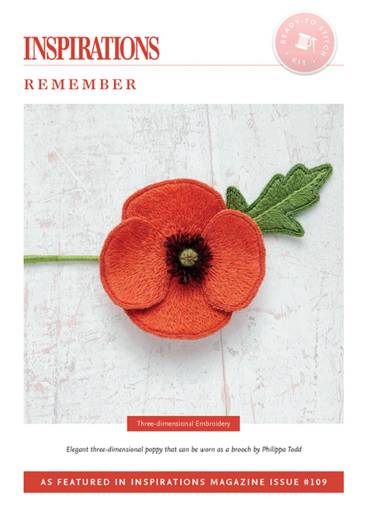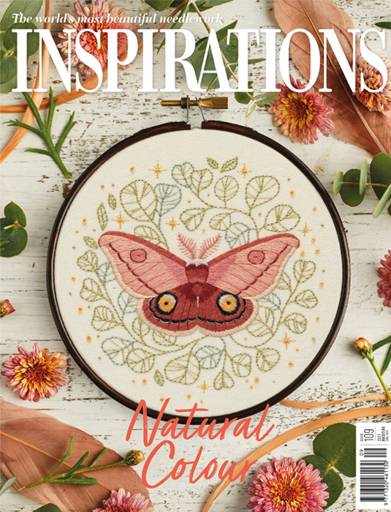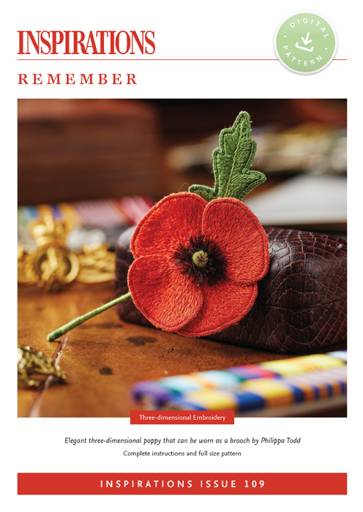Remember by Philippa Todd
12TH MARCH 2021 - ASU #273
The sight of a red poppy pinned carefully to a lapel or hat has become common in many countries across the world, worn proudly by thousands in the lead up to 11 November in celebration of Armistice Day.

Marking the day that the First World War finally ended, the date stands as a way to honour all of the men and women who perished in wars throughout the intervening years.
Some countries, such as the USA and Australia, also use poppies as a memorial for other days in the year: in the US, it is worn on Memorial Day at the end of May to commemorate the men and women who have sacrificed their life for their country; and in Australia, the poppy is ubiquitous on ANZAC Day in April, when the country remembers troops, past and present.

The poppy gained its status very early on. In 1915, Lieutenant Colonel John McCrae, a Canadian serving as a surgeon for an Allied artillery unit, noticed a large group of red poppies blooming amidst the ravaged earth after the Second Battle of Ypres.
The seed pods of the Papaver rhoeas, or the common poppy, generally contain up to 800,000 seeds which can lie dormant under undisturbed ground for many years.
When the ground became churned up in the conflagration, the seeds germinated and grew.
McCrae, so moved by the sight of the red poppies, which seemed to poignantly represent the vast amount of blood already spilled during the war, wrote his now famous poem ‘In Flanders Fields’. Before long, the deep symbolism of this simple flower was adopted in almost every country which had been involved in The Great War and subsequent wars, and as a result, it is still revered to this day.

Originally, silk poppies were produced to raise money for returning service men and women as well as veterans’ organisations. As the years have gone on, silk has morphed into paper and synthetic. The Poppy Factory in the UK now produces some 45 million poppies of various materials each year, so that people can continue to commemorate the bravery and tragedy of past conflicts.

Needlework artisan Philippa Todd has designed her own perfect version of the commemorative poppy, using three-dimensional embroidery. Mimicking the shape of the actual bloom, Philippa has worked this project such that it can be pinned to a lapel or made into a brooch.

The rich colours are emphasised through the use of fine silk thread, and the tactile centre of the flower completes the piece to perfection.
Although ostensibly for Remembrance Day, this beautiful poppy could easily be worn at any time throughout the year.
The simplicity of the project Remember from Inspirations issue #109 means that the project can be completed in a comparatively short time, with each element being worked separately, then pieced together on a sturdy wrapped stem.

This means that you may be able to work up several of these beautiful poppies and perhaps even hand them out as gifts as Remembrance Day draws near. Or bunch a few of them together to create a posy and brighten a dark day. Whichever way you wish to use them, you can be sure that this beautiful project will be one to admire and enjoy for many years to come.
Make Your Own | Remember

Step 1 – Purchase Project Instructions
Remember by Philippa Todd is an elegant three-dimensional poppy that can be worn as a brooch.
Step 2 – Purchase Ready-To-Stitch Kit
The Inspirations Ready-To-Stitch kit for Remember includes everything* you need to re-create this elegant brooch: Fabrics (unprinted), wool felts, beading wire, brooch pin, embroidery threads, bead and needles.

Kit
Remember - i109 Kit
Shop Now*Please Note: To cater for flexibility of purchase, instructions are not included with our kits. For step-by-step directions on how to create this project, please refer to the magazine/digital pattern.


